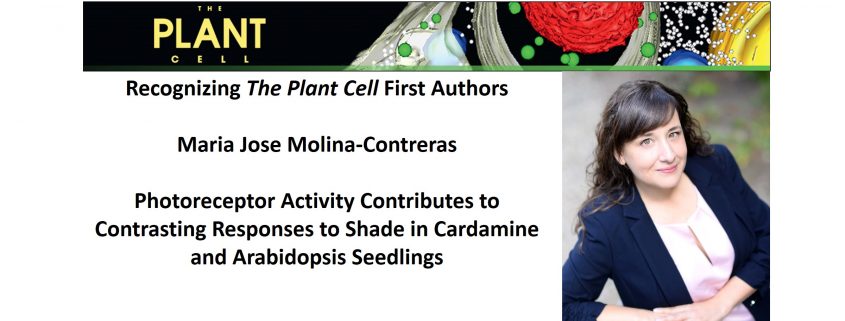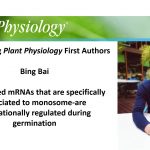Recognizing Plant Cell first authors: Maria Jose Molina-Contreras
Maria Jose Molina-Contreras, first author of Photoreceptor Activity Contributes to Contrasting Responses to Shade in Cardamine and Arabidopsis Seedlings
Current Position: Product Data Manager (Berlin, Germany)
Education: BSc and MSc in Plant Biology at the Autonomous University (UAB) and PhD in Biotechnology at the University of Barcelona (UB) and Centre for research in agricultural Genomics (CRAG)
Non-scientific Interests: reading, travelling, cooking and discussing about tech, science, politics and society
Brief bio: As a kid, my biggest dream was to become a scientist, mainly because I thought of that profession as a way to perform experiments, to have great ideas and, above all, a way of helping and making a contribution to humanity. After finishing my studies in Biology, I realized that I could make my dream come true by working on Scientific Research, and this is the main reason why I decided to pursue a career in the “research world”.
From my perspective, Agriculture is one of the key aspects to guarantee the future of humanity. During my education, I was able to study a syndrome that has undesirable consequences in plants, and thus in Agriculture -it is called the Shade Avoidance Syndrome (SAS)-. When I was looking for research institutions that worked on these problems, I decided to join Dr. Jaume Martinez’s lab at the Centre for research in agricultural Genomics (CRAG). I began my cooperation at this laboratory by being a master student, and then I decided to pursue a PhD, studying the main topic in our workroom, which was how plants respond to vegetation proximity.
During those years, I worked with two model plants: Arabidopis thaliana and Cardamine hirsuta. These species, which are closely related, have opposite strategies to the same environment conditions: while A. thaliana avoids vegetation shade, C.hirsuta, tolerates it.
I truly hope this work contributes to having a better understanding of how responses are being modulated in these species of plants, which in turn might help to the future of agriculture and a more sustainable world.




